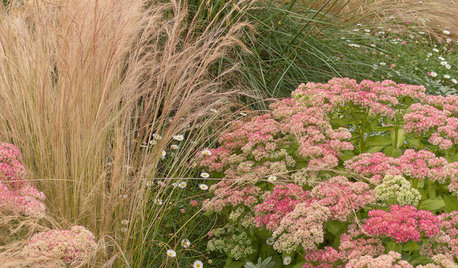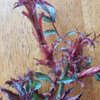Climate and Soil - Why so often do we ignore it?
jim_w_ny
16 years ago
Related Stories

GARDENING GUIDES6 Dependable Ground Covers for Warm Climates
Swap some lawn for these drought-tolerant clumping plants — and watch your maintenance efforts diminish while they easily grow
Full Story
GARDENING GUIDESWhat's Wrong With My Plant? Leaves Often Hold the Clues
Learn how to identify common plant ailments by reading their leaves
Full Story
GARDENING GUIDESGet the Dirt on Your Garden’s Soil
Understand how your soil supports your plants so you can ensure your garden’s success
Full Story
GARDENING GUIDESInvite Cellophane Bees to Your Garden by Providing Patches of Bare Soil
Look for cellophane bees (Colletes) pollinating flowering trees and shrubs in U.S. gardens this spring
Full Story
GARDENING GUIDESGreat Garden Combo: 3 Soft-Looking Plants for a Dry Climate
Weave a romantic tapestry with this drought-tolerant combination of plants as tough as they are lovely
Full Story
GARDENING GUIDESHow to Stop Worrying and Start Loving Clay Soil
Clay has many more benefits than you might imagine
Full Story
GARDENING GUIDESGardening Solutions for Heavy Clay Soils
What’s a gardener to do with soil that’s easily compacted and has poor drainage? Find out here
Full Story
GARDENING GUIDESHow to Pick a Mulch — and Why Your Soil Wants It
There's more to topdressing than shredded wood. Learn about mulch types, costs and design considerations here
Full Story
GARDENING GUIDESGardening Solutions for Dry, Sandy Soils
Has your desert or beachy site withered your gardening creativity? Try these ideas for a beautiful, easy-care landscape
Full Story
ARCHITECTURE15 Smart Design Choices for Cold Climates
Keep your home safe and comfortable in winter by choosing the right home features and systems
Full Story







reg_pnw7
alicia7b
Related Professionals
Sahuarita Landscape Architects & Landscape Designers · Washington Landscape Architects & Landscape Designers · Canton Landscape Contractors · Edmond Landscape Contractors · Bristol Landscape Contractors · Byram Landscape Contractors · Fort Payne Landscape Contractors · Fountain Valley Landscape Contractors · Kaneohe Landscape Contractors · Lorain Landscape Contractors · North Lauderdale Landscape Contractors · Oak Harbor Landscape Contractors · Salem Landscape Contractors · 07920 Landscape Contractors · Winter Gardens Landscape Contractorslen511
jerijen
Maryl (Okla. Zone 7a)
daun
jim_w_nyOriginal Author
len511
jim_w_nyOriginal Author
cindyabs
veilchen
mad_gallica (z5 Eastern NY)
reg_pnw7
jerijen
jim_w_nyOriginal Author
oldroser